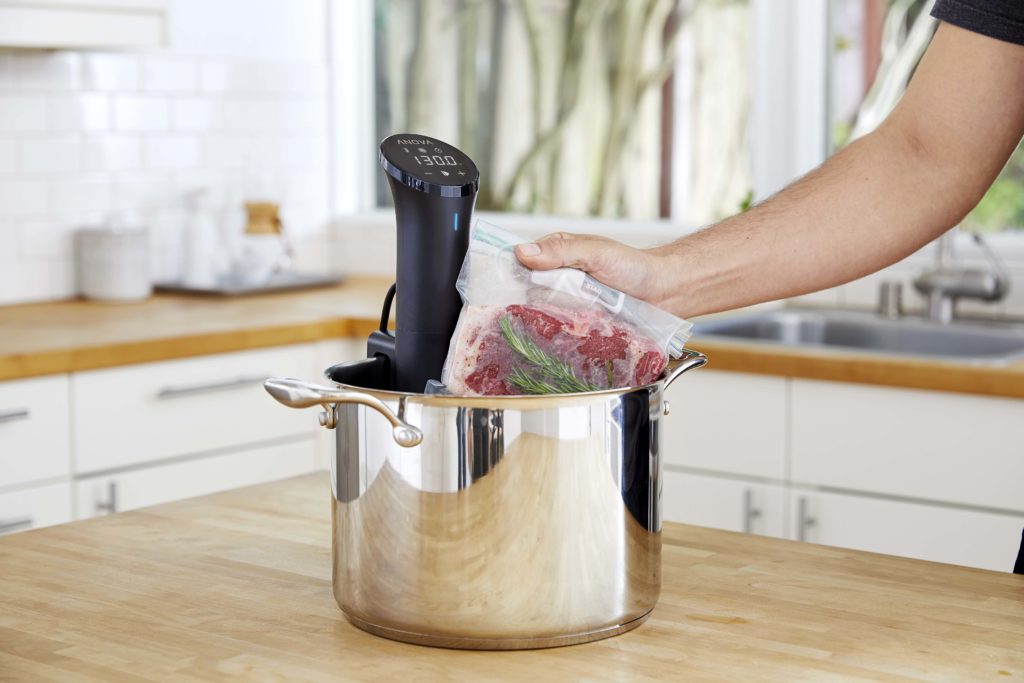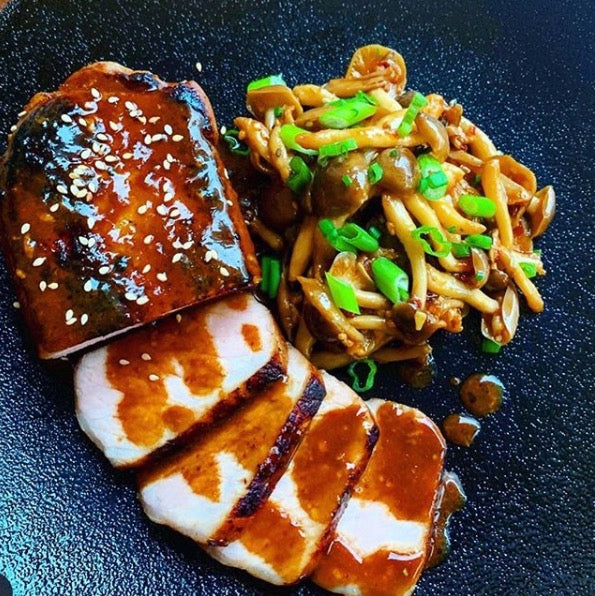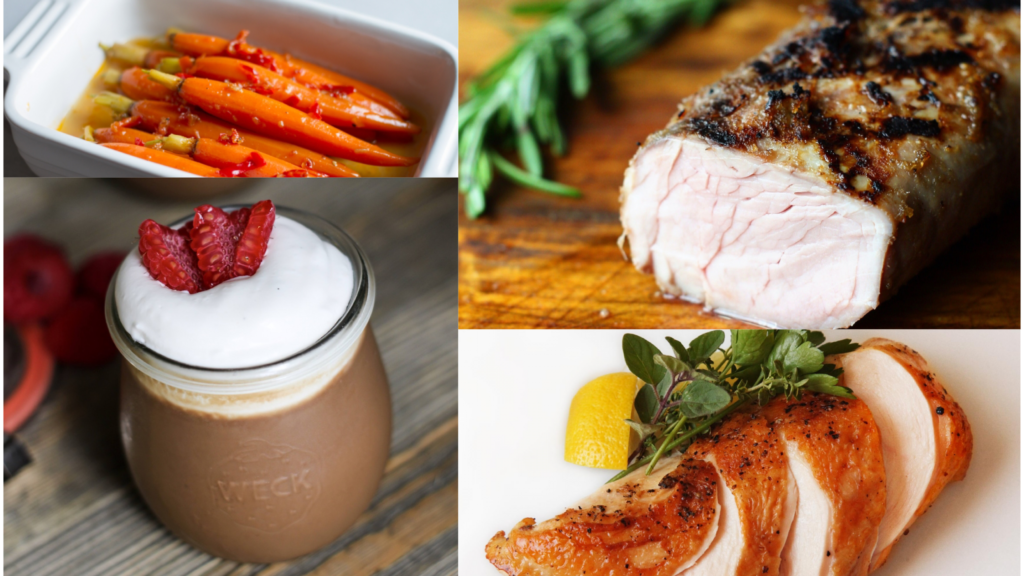We welcome new users to the #anovafoodnerd family every day! We are as excited as you are to get you cooking like a pro, and want to loop you in on a hew tips and tricks that will start your sous vide journey down the path of smashing successes. Check out some top tips and tricks below, as well as some burning FAQ's. Ready, set, sous vide!
What equipment do I need?

- Your Anova Precision Cooker. Duh!
- A cooking vessel and something to put it on to protect your counter. Stockpot, Cambro, Polycarbonate container, and really anything that holds water. Learn more about vessels and containers here.
- Vacuum sealed bags, ziplock bags, Stasher silicone bags, or jars. Peep more sous vide cooking vessel options here.
- Food!
What can I cook with my Anova?

How do I prep my food for cooking?

- There are NO hard rules here!
- Season before you bag or before you sear...or both! Marinade if you like, brine away if that's your jam. Find what works best for your preferences.
- Check out some sous vide seasoning tips to up your game.
- Wondering the difference between vacuum bags or ziplock? Not much! Use both for great results
- For the best results using ziplock bags, peep this blog and video on how to use the water displacement method to remove the air
- We are also big fans of the Stasher Silicone Sous Vide Bags! If you're looking for a plastic free solution, these are your ticket!
What are some easy recipes to start with?

- From a flavor to work ratio, it's hard to beat this Apple Butter Pork Tenderloin from #anovafoodnerd Erika Turk.
- Tired of dry, stringy chicken breast? We brought in Kenji Lopez-Alt to dismiss any dry chicken from your life.
- Hard to beat a perfect steak. Say bye to your favorite steakhouse, because you won't be going back after #anovafoodnerd Kate Williams teaches you the secrets to a magical medium-rare strip steak.
- Eating more veggies (editors note: you should!) rules. These harissa glazed carrots from #anovafooderd Jeff Akin and Emily Farris bring the heat...and the flavor.
- Can't forget dessert! Erika Turk returns with the most decadent dark chocolate custard.
How do I know what time and temp to use?
How in the heck do I sear?!

- Kind of like the seasoning tips, this is up to you. Whatever you use, get it hot! 500-600°F is the sweet spot.
- Grill, cast iron pans, and torches all work well.
- The best tip? DRY the meat after cooking! Moisture is the enemy of a great sear, and to get the best browning make sure the surface is as dry as possible.
- Use a high smoke point oil in the pan, or if grilling or torching, rub a light coat of oil (or mayo...seriously, works like a charm). Check out our oil smoke point chart!
I like my meat medium rare, but my family prefers it medium/medium-well/well-done. How do I handle this?
- Start high, finish low! For well done, cook the food at the proper time and temp, then lower the water bath temp to the desired temp for the next doneness. Add some ice to hasten this! Once the temp is lowered, add your bag of food destined for the lower temp, and cook it the necessary time. You can keep the well done food bathing away, and it won't overcook! All the food will be done simultaneously. Cheers!
How do I reheat my food after it has been chilled?
- To reheat, bag the food up, and sous vide at the same temperature you cooked previously! 30-45 minutes for most items is sufficient. If it's something larger, like a whole roast, 1-2 hours will do the trick.
Where can I ask more questions not covered here?
-
How about the biggest, coolest sous vide community on the planet?! Join our facebook group with over 30,000 members. There’s literally nothing you can’t learn there.
We’re super pumped to get new food nerds and OG’s alike cooking like pros. Anything else you want to learn? Drop it in the comments below, and happy cookin’!






